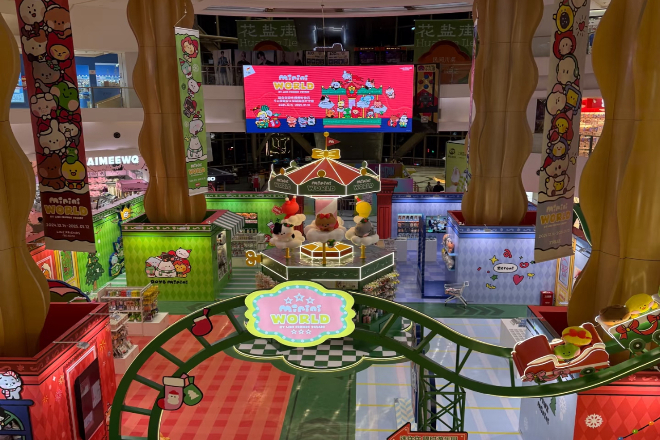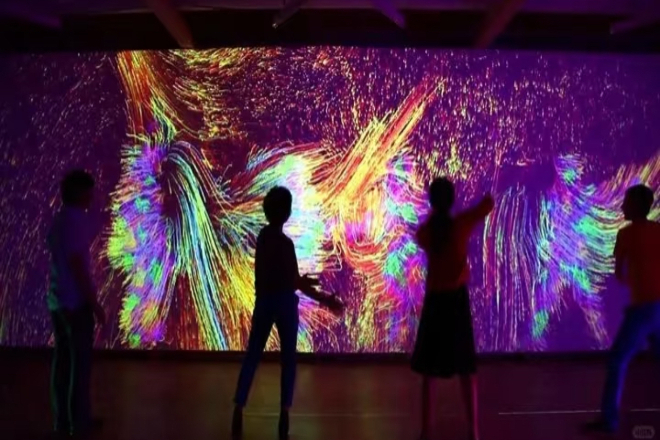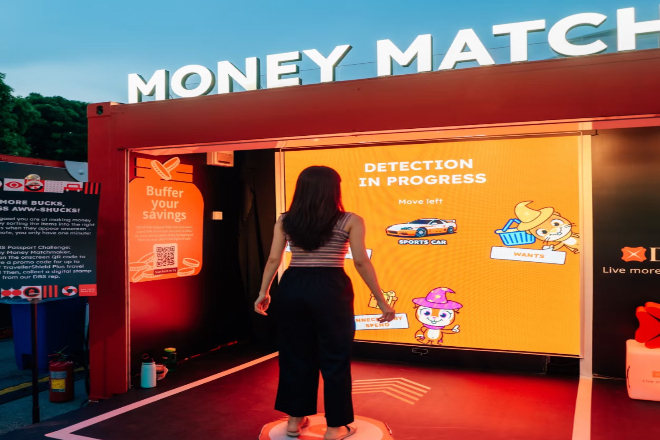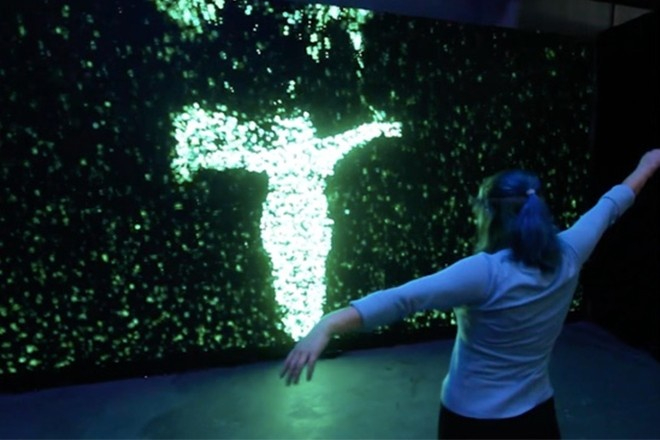序章
子どもたちの幸せな世界において、子どもの遊び場は空想と夢に満ちた場所です。
しかし、どうすれば子どもたちはここでもっと幸せになり、同時に楽しくて教育的な体験ができるのでしょうか?
多分、 LED表示画面 子どもたちの幸せなパートナーとなり、子ども時代に彩りを添えることができます。
目次
ステップ1:子どものニーズと好みを理解する

1). 色彩と視覚的な魅力
子供たちは特に明るい色に興味があり、LEDディスプレイはまさに彼らの期待を満足させてくれます。例えば、ピンクは幻想的な雰囲気を醸し出し、黄色は生き生きとした印象を与えます。
星がきらきらと輝いたり、花が徐々に色を変えたりするなど、色の変化を通して、子どもたちは新鮮さを感じ、しっかりと注意を引き付けることができます。
2)アニメーションとストーリーの内容
子どもたちは想像力を刺激してくれるので、アニメーションや物語が大好きです。「ペッパピッグ」や「白雪姫」といった昔懐かしいアニメーションや童話を聞かせてあげましょう。
コンテンツを選ぶ際は、年齢に注意してください。シンプルで面白く、ゆっくりとしたテンポのアニメーションは、小さなお子様に適しています。健全なコンテンツを確保するため、暴力やホラー要素は避けてください。
3)インタラクティブ性の重要性
子どもたちは参加したり交流したりするのが好きで、インタラクティブなLEDディスプレイスクリーンはまさにそのニーズを満たしています。例えば、シンプルなタッチゲームや体性感覚ゲームをデザインしてみましょう。
子どもたちは、「すごいね!」などの操作や面白いアニメーションなど、画面からのフィードバックを得ることができ、より達成感や関与を感じることができます。
ステップ2:子供向けのLEDディスプレイコンテンツを作成する

1). 組み合わせる 教育 エンターテイメント付き
エンターテインメントに教育的要素を取り入れることで、子どもたちは知識を学べるだけでなく、楽しさも感じることができます。
たとえば、アニメーションを使用して、数え上げ、足し算、引き算などの簡単な数学の知識を示したり、興味深い画像を使用してピンインを教えたりすることで、学習を容易にすることができます。
また、かわいい動物の画像や鮮やかな写真を通じて、子供たちに動物の生活習慣や自然な知識を理解させるための「動物の世界」シリーズのプログラムを設計することもできます。
たとえば、小さなウサギがニンジンを食べる様子や、小さなサルが木の上で遊ぶ様子を見せると、子どもたちは見ながら多くのことを学ぶことができます。
2)フェスティバルやテーマ別のアクティビティ
さまざまな祭りに合わせてテーマ別の LED ディスプレイ コンテンツを設計すると、子どもたちに祭りの雰囲気を強く感じさせることができます。
例えば、子供の日には、子供たちの好きな漫画のキャラクターが集まるアニメーションを再生することができます。
クリスマスにはサンタクロースがプレゼントを渡す場面を、春節には龍舞や獅子舞の映像を流すことができます。
また、クリスマスには子供たちが画面をタッチしてサンタクロースがプレゼントを探すのを手伝ったり、春節には子供たちが画面上で花火を打ち上げて画面を飾ったりするなど、休日をテーマにしたインタラクティブ ゲームを設計することもできます。
同時に、画面には「こどもの日おめでとう!」「メリークリスマス!」などの祝日の挨拶が表示され、子どもたちにお祭りの喜びを感じさせることができます。
3). 安全で健康的なコンテンツのスクリーニング
LEDディスプレイのコンテンツが、お子様の精神衛生と視力保護の要件を満たしていることを確認することは非常に重要です。画面の切り替えが速すぎたり、まぶしい光がお子様の目に悪影響を与える可能性もあるため、避けてください。
同時に、再生されるすべてのコンテンツが暴力、ホラー、不健全な要素がなく、子供が視聴するのに適したものであることを保証するための厳格なコンテンツ審査メカニズムを確立する必要があります。
この方法でのみ、子供たちは安全で健康的な環境で LED ディスプレイの楽しさを楽しむことができます。
ステップ3: LEDディスプレイのハードウェアと機能を最適化する
1). 画面サイズと設置場所
子供の遊び場では、LED ディスプレイのサイズと設置場所が特に重要です。
高さと 視聴距離 子供にとって、画面は大きすぎても小さすぎてもいけません。
一般的に、子供の遊び場に適したスクリーンのサイズは約 3 ~ 5 平方メートルで、大きすぎるように見えずに子供たちにはっきりと見えるようになります。
設置場所も重要です。お子様が遊んだり休憩したりする際に、画面の内容が見やすいよう、アミューズメント施設の近くや休憩スペースなどに設置するのがおすすめです。
例えば、メリーゴーランドの横に設置すると、子どもたちがメリーゴーランドに乗っているときに見上げて面白い絵を見ることができるので、楽しさが倍増します。
2)音響効果と音響制御
効果音は子供たちの興味を引き付けるために非常に重要です。高品質のサウンドシステムを使用すれば、よりクリアで心地よい音を届けることができます。
たとえば、漫画の中の動物の鳴き声や音楽を流すと、子どもたちは特にリアルに感じます。
ただし、音量は適切に制御し、大きすぎないようにする必要があります。そうしないと、子供の聴力を損なってしまいます。
一般的に言えば、60~70 デシベル程度に音量を制御するのが適切であり、これにより、子供が耳に損傷を与えることなく明瞭に聞こえることが保証されます。
ステップ4:楽しい視聴環境を作る

1). 親子交流セッション
子どもたちとその親たちが遊び場で楽しく遊んでいるとき、LED ディスプレイが大いに役立ちます。
たとえば、LED ディスプレイ スクリーンを使用して、親子で楽しめるインタラクティブ ゲームを設計できます。
画面に「親子パズル競争」が表示されているところを想像してみてください。パズルは複数のピースに分かれており、親子で協力して、どちらがより早く、より上手にパズルを解けるかを競います。
あるいは、「家族でクイズ」をしてみましょう。「子ウサギは何が一番好きなの?」「太陽は何色?」など、シンプルで面白い質問が画面に表示されます。
親子で一緒に答えを探しましょう。正解すると、小さなおもちゃやクーポンなどのご褒美がもらえます。
LEDディスプレイにゲームの結果がリアルタイムで表示されます。最も多くの正解を出した人が、今日の「リトルナレッジマスター」となります。
子どもたちが楽しくなるだけでなく、親と子どもの関係も深まります!
2)現場での交流とフィードバック
子どもたちのアイデアはいつも素晴らしく、遊び場にあるものに対していつも独自の視点を持っています。このとき、LEDディスプレイスクリーンは子どもたちからのフィードバックを集めるのに役立ちます。
たとえば、画面に簡単な投票がポップアップ表示され、子供たちに「どのアニメキャラクターが一番好きですか?」と尋ねます。
画面にはかわいい漫画のキャラクターがいくつか表示されます。お子様が好きなキャラクターを指で指すと、すぐに結果が表示されます。
笑顔や泣き顔などの絵文字を使って、子どもたちが特定のゲームやアニメをどれだけ気に入っているかを伝えることもできます。遊園地のスタッフは、これらのフィードバックに基づいて、コンテンツを適宜調整することができます。
お子さんが特定のアニメを特に気に入っている場合は、何度も繰り返して遊ばせたり、特定のゲームがあまり人気がない場合は、もっと面白いゲームに変えてみたりしましょう。こうすることで、お子さんは自分の好きなものをもっとたくさん知ることができます。
3)他のアミューズメント施設との連携
遊園地には、メリーゴーランド、バンパーカー、電車など、楽しい遊園地施設がたくさんあります。LEDディスプレイはこれらの施設と連携して、子供たちにさらなる楽しみをもたらします。
たとえば、メリーゴーランドの横にある LED ディスプレイにゲームのルールを表示できます。「隠れたポニーを見つけた人にはサプライズがあります!」
子どもたちがメリーゴーランドに乗ると、同時に発見したり遊んだりするので、とても面白いです。
バンパーカーエリアでは、LEDディスプレイに各車のスコアや順位をリアルタイムで表示することができます。
たとえば、「赤い車が1位になりました!」など、子供たちがゲームを終了すると、LEDディスプレイに結果と報酬情報も表示されます。「おめでとうございます。今日のベストバンパードライバーに輝きました!」
子どもたちは、自分の成果や報酬を見て間違いなくとても喜ぶでしょう。また、この連携により、遊び場全体の雰囲気がより活発になり、子どもたちは遊び場の隅々までが面白いと感じるようになります。
ステップ5: コンテンツを定期的に更新し、革新する
1). コンテンツ更新計画
LEDディスプレイのコンテンツを定期的に更新することは非常に重要です。そうでないと、子どもたちは見すぎて飽きてしまいます。詳細な更新プランを立てることができます。
たとえば、毎週新しい漫画を変更し、テーマアクティビティを月に 1 回更新します。
こうすることで、子どもたちは遊び場に来るたびに新鮮なコンテンツを見て、興味と好奇心を維持することができます。
2)新しい技術と創造性を導入する
現在、3D 効果やバーチャル リアリティなど、子供たちに新しい視覚体験をもたらす優れたディスプレイ テクノロジーが数多く存在します。
これらの新しいテクノロジーを使用することで、LED ディスプレイのコンテンツをより鮮やかで興味深いものにすることができます。
たとえば、3D 効果を使用して水中の世界を表示すると、子供たちはまるで本当に海の中にいるかのような気分になります。
テクノロジーに加え、クリエイティブなコンテンツも重要です。アニメーションを自社で制作したり、有名な子供向けブランドと提携したりすることも可能です。
たとえば、ペッパピッグと協力して独占的なアニメーションクリップを制作したり、ブランドに関連したインタラクティブなゲームをデザインしたりします。
これは子供たちを引き付けるだけでなく、遊び場の魅力も高めます。
ステップ6:公園スタッフを訓練する

1). 操作および保守トレーニング
LED ディスプレイ画面を良好な動作状態に保つには、公園スタッフを適切に訓練する必要があります。
トレーニングの内容には、機器の電源のオン/オフ操作、画面の正しいオン/オフの方法の指導、不適切な操作による機器の損傷の回避などが含まれる必要があります。
また、画面が突然真っ黒になる場合、電源コードが緩んでいる可能性がある、画面の反応が遅い場合はキャッシュを消去する必要があるかもしれないなど、いくつかの簡単なトラブルシューティング方法も教える必要があります。
もちろん、コンテンツのアップロードも非常に重要です。子どもたちが新しいコンテンツをタイムリーに見られるように、新しいアニメーション、ゲーム、テーマアクティビティなどを画面にアップロードする方法を教えることが重要です。
2)指導と対話のスキル
職員は、遊び場にいる子どもたちにとって「大切な友達」のような存在です。子どもたちがスクリーン上のコンテンツを見るように導き、交流に参加するよう促しましょう。
たとえば、インタラクティブなゲームが画面に表示されたら、スタッフは画面上のボタンを指差すなどの簡単なジェスチャーを使用したり、「子どもたち、見て、画面上の小さなウサギがニンジンを探すのにあなたの助けを必要としています!」といった言語プロンプトを使用したりすることができます。このようにして、子どもたちはどのように参加すればよいかがわかります。
同時に、スタッフは「よく頑張っているよ!」「やってみて、楽しいよ!」など、優しく励ましの言葉を使って子どもたちと効果的にコミュニケーションをとり、フレンドリーで楽しい雰囲気を作り出すことを学ぶ必要があります。
このように、子どもたちは遊び場で楽しむだけでなく、スタッフの熱意と親しみやすさも感じることができます。
7. 結論
慎重に設計された LED ディスプレイのコンテンツと機能を通じて、子供たちに喜びをもたらすだけでなく、成長の過程で良い思い出を残すこともできます。
子供の遊び場のあらゆる場所が、子供たちが探索し学ぶための楽園になります。
最後に、LEDディスプレイについてもっと知りたい方は、 ご連絡ください。
